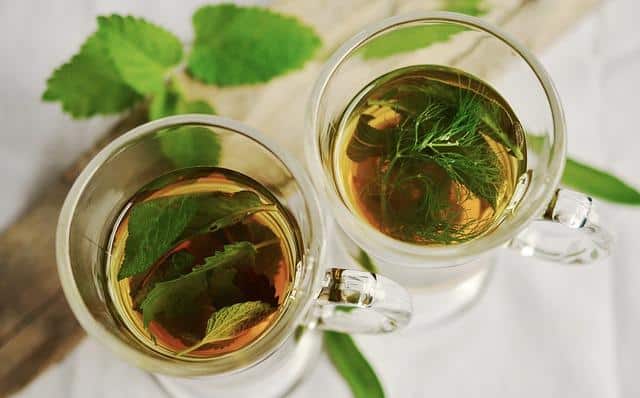The fall can be a busy time if you’re trying to stock a well-prepared larder. Perhaps you’ve put up or purchased enough food to get you through the winter, but have you thought about keeping your family healthy as well as fed? There are many natural medicines that are easy to make at home during autumn to keep your family healthy all winter long.
1. Herbal teas
A great place to start for the beginner, herbal teas can be as simple as looking for tasty and health-promoting recipes in your favorite reference book and mixing them ahead of time. Dried herbs can easily be purchased for your first batch, but harvesting and drying them at home is a much more cost-effective and reliable method of ensuring availability. Even if you haven’t planted an herb garden, try learning to identify and harvest wild elderberries, yarrow, rose hips, raspberry leaf and mullein as a first step. Drying can be as simple as tying them into small bundles and hanging them in a well-ventilated area out of direct sunlight. Once dry, store in Mason jars or other airtight containers in a cool, dark place.
2. Tinctures
Once you’re comfortable blending your own herbal teas, tinctures are a great next step. While there are many plant compounds that are water soluble in teas, some medicines are alcohol soluble and require a different extraction to get the full benefit. Examples of alcohol soluble herbs include most that are high in resins or naturally antibacterial alkaloids such as Echinacea, cleavers, nettle and elecampane. To make a tincture, start with a plain alcohol such as grain alcohol or vodka that is at least 50 proof (25 percent alcohol), preferably 80 proof or higher. For most herbs, a ratio of 1 part herb to 5 parts alcohol works well for extraction. Place the herbs and alcohol in a sealed jar out of direct sunlight for at least 2-3 weeks, shaking occasionally. Strain out the herb, and the tincture is ready for use.
3. Oxymel
An alcohol-free way to extract herbs that may not be water soluble is with vinegar. Oxymel is a mixture of a vinegar-extracted herb, with raw honey to both enhance the health benefits and the palatability. Ratios vary widely, but a common method takes 1 part herb, 2 parts vinegar and 2 parts honey for the mixture.
‘Miracle Oil Maker’ Lets You Make Fresh Nut Oils Within Minutes!
Add all three parts to a mason jar, seal and wait 2-3 weeks before straining out the herb and bottling for use. There are many elderberry/vinegar/honey oxymels on the market today, selling for as much as $5-$10 dollars per ounce, when they can be made at home for just a few dollars per quart. Dollar for dollar, oxymel is one of the easiest and most economical natural remedies to make at home.
4. Infused oils
Following the same principle as tinctures and oxymels, infused oils extract herbal components into an oil base. Try a neutral oil such as sunflower, almond oil or light olive oil. A ratio of 1 part herb to 2-4 parts oil works well for most herbs. In the winter, herbal-infused oils can be great for treating burns, ear infections, topical fungal issues or respiratory issues when used as a chest rub.
5. Healing salves
Once you have an infused oil, a healing salve is a great way to improve the versatility of your remedy. Healing salves take infused oils and add a wax component to make them semi-solid at room temperature so that they’re easy to apply and store. Start with 8 ounces of infused oil and 1 ounce of beeswax. Slowly heat until the beeswax is melted, and then mix thoroughly. Pour into a storage container while hot. Healing salves often incorporate the use of essential oil and vitamin E oil to enhance their effectiveness, depending on the use.
6. Witch hazel extract
A commonly used astringent and topical disinfectant, witch hazel is easy to make at home. Witch hazel is a small bush/shrub that’s prevalent in the wild in the eastern half of the United States. An extract can be made from wild harvested witch hazel twigs, or if you prefer, there are many online sources to purchase dried witch hazel bark. For the most potent extract, harvest the twigs just after the plant has flowered late in the fall (October/November). Finely chop the twigs with pruning shears or scissors, cover completely with water and place on the stove on low to simmer. Most recipes slow cook the stems and bark for at least 8 hours, adding water during cooking to keep the plant material covered. Once it’s done cooking and cooled completely, it’s perishable unless alcohol is added as a preservative. Add 1 part high proof vodka or grain alcohol for every 2 parts witch hazel extract, and store in a cool dark place indefinitely.
Which is your favorite home remedy? What advice would you add? Share your tips in the section below:
Harness The Power Of Nature’s Most Remarkable Healer: Vinegar [2]
